by Martin Green
When Piaget introduced the manual wind Caliber 9P at the 1957 Basel Fair, it took many other brands by surprise. Some claimed behind the scenes that it was a ruse, that this movement couldn’t possibly be real. Only 2 mm in height, it couldn’t be done; it was an impossibility.
Yet Piaget proved that not only could it be done, but that the movement could also be produced in commercial quantities and was reliable enough to maintain the paces of everyday life.
What these naysayers couldn’t know in the late 1950s was that Caliber 9P represented only the beginning. Three years later, in 1960, Piaget stunned the watch world once again with Caliber 12P.
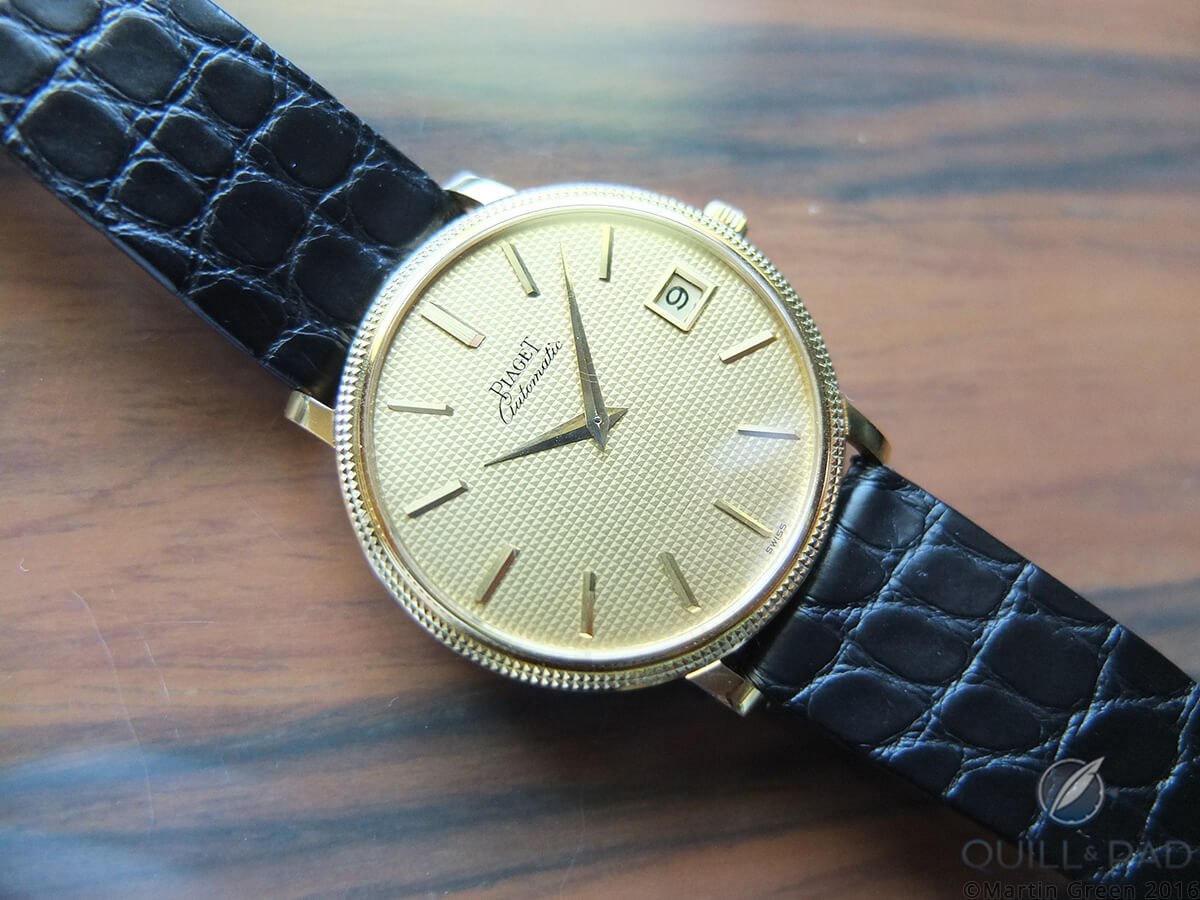
Vintage Piaget Ultra-Thin Caliber 12P
At a height of only 2.3 mm, it became the thinnest automatic movement in the world. What is perhaps even more remarkable is that Piaget didn’t cut any corners getting there. Although only clearly visible to the observer from the outside underneath the balance wheel, the entire base plate was decorated with circular graining, while the bridges delighted the eye with vertical côtes de Genève and hand-chamfered edges.
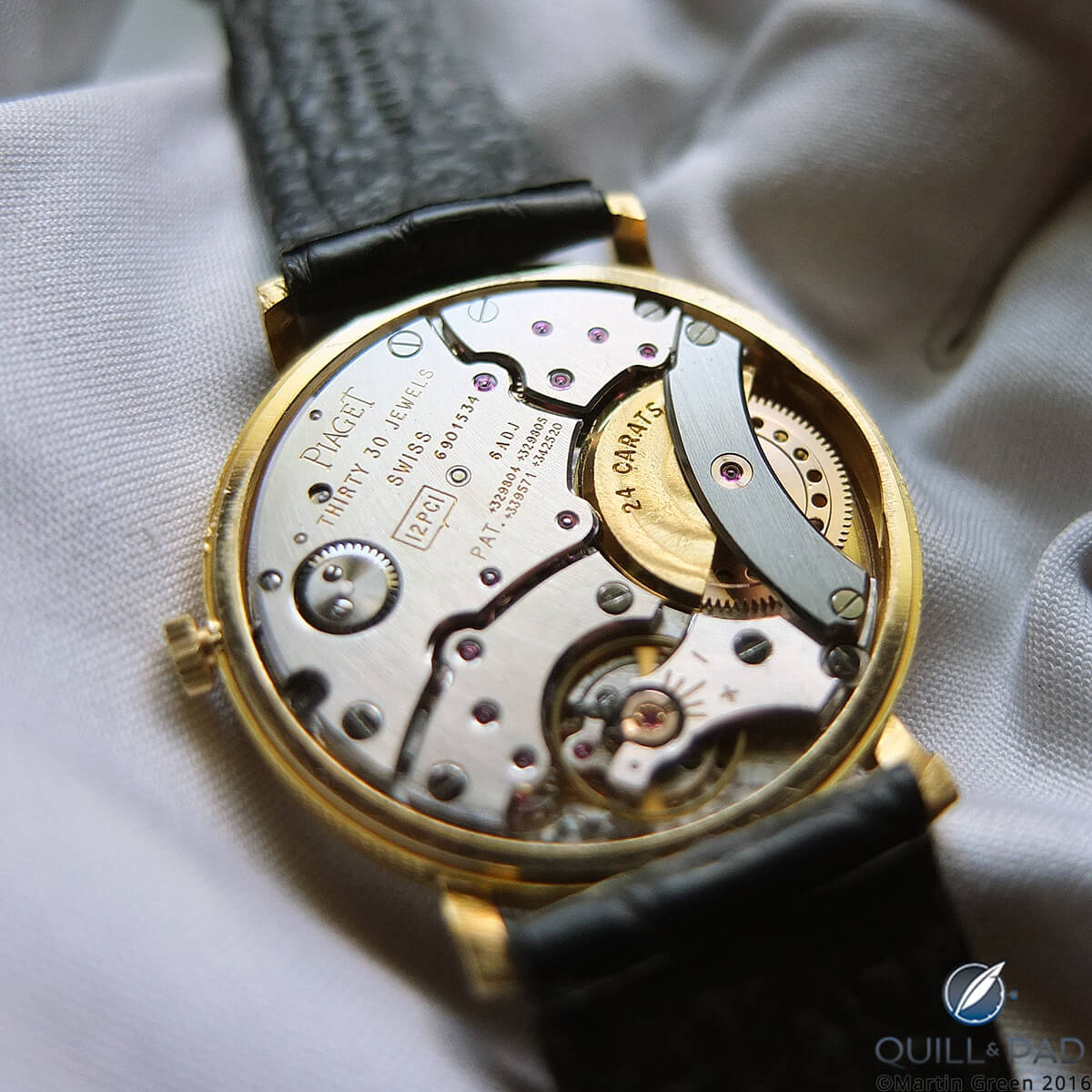
You can see the curved recess in the case band on the right that allows free movement of the micro rotor of this vintage Piaget Caliber 12P
Creating such delicate decorations is already difficult enough on any movement, but on an ultra-slim one like this these tasks became exponentially more difficult.
To limit the height as much as possible, the movement doesn’t get its energy from a centrally mounted rotor, but instead an off-center micro rotor. This rotor is actually set so far off-center that it extends past the periphery of the base plate.
Therefore, each watch fitted with Caliber 12P had a small section carved out of the inside of the case to allow the rotor its freedom to move. The rotor itself was also special because it was crafted in pure 24-karat gold.
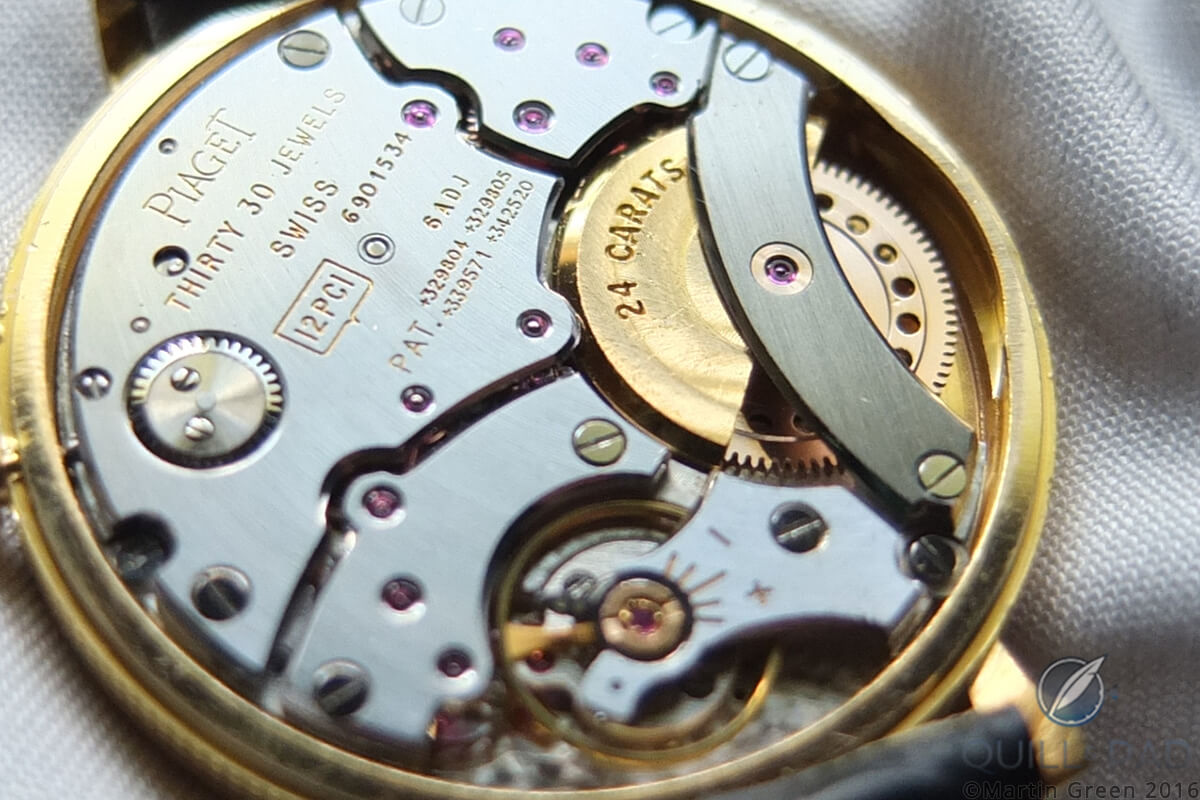
Vintage Piaget Caliber 12P with 24-karat gold micro rotor
Piaget specifically chose this material to make the micro rotor as heavy as possible. Secured by a full bridge, the rotor is mounted on top of a gear whose job comprises transferring the energy created by the motion of the rotor to the spring barrel.
Piaget never went into the business of creating ultra-slim movements just for the sake of breaking records. The fact that the brand has achieved this time after time most certainly didn’t hurt sales, but the primary reason for Piaget to create small, svelte movements was to provide its designers with the ability to work with artistic freedom minimally constrained by movement dimensions.
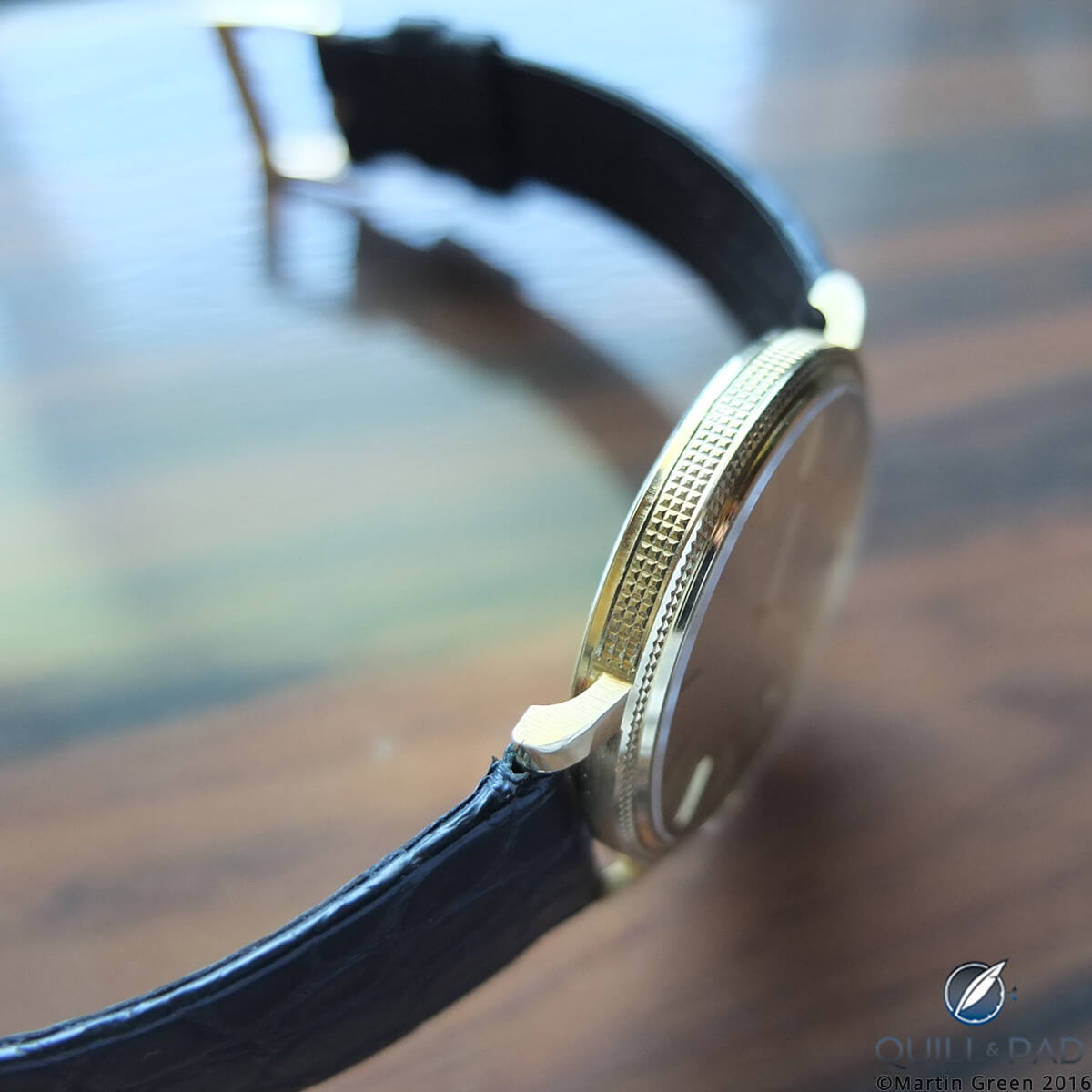
Clous de Paris engraving extends around the ultra-thin case band of this ultra-thin Piaget Caliber 12P model from 1969
That artistic freedom was most certainly seized by Piaget’s designers. The world changed rapidly in the 1960s and ‘70s, but Piaget’s designers seemed to have their finger on the pulse and used Caliber 12P as well as 9P to create watches that pushed the boundaries of design.
Some of the designs were very expressive, others showed their qualities in more introverted ways.
Just a dress watch?
At first glance, this vintage Piaget Caliber 12P model from 1969 looks like nearly any other sober dress watch, but close examination provides evidence of incredible decoration and finishing techniques. The dial, bezel, and case sides feature delicate rows of clous de Paris.
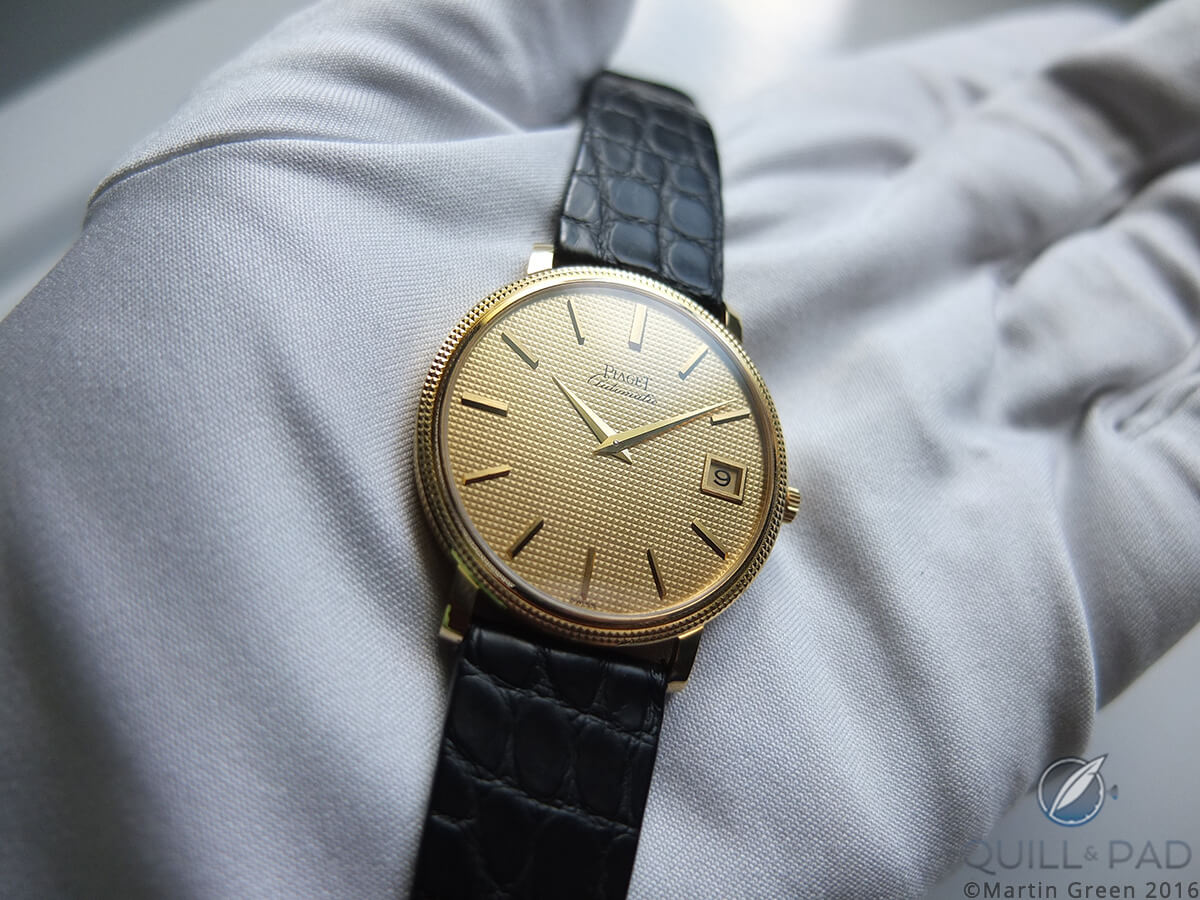
An exceptionally beautiful ultra-thin Piaget Caliber 12P model from 1969
These tiny, golden pyramids lend the timepiece a refined texture. But this refinement doesn’t stop there: powered by such an ultra-slim movement, Piaget wanted to show it off a little, so the brand went to extra effort to make the profile of the watch as thin as possible.
To accomplish this, the sapphire crystal is mounted very close to the dial. Apart from the fact that the watchmaker has to set the hands pretty close to each other as well as the dial, this doesn’t sound too spectacular – though it in fact is.
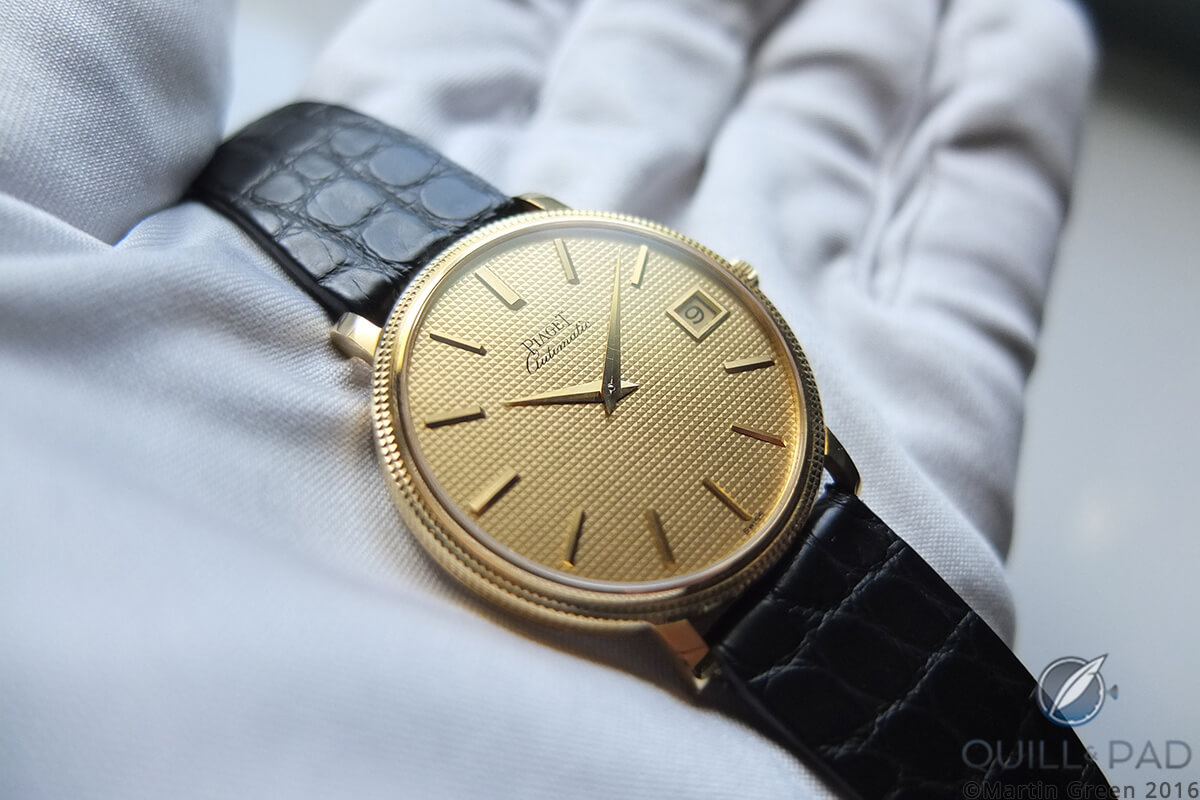
An truly beautiful ultra-thin Piaget Caliber 12P model from 1969
Like the dial of a Rolex Date-Just, which features small “blocks” of gold to indicate the hours, Piaget created the same sort of look here, only that the “blocks” are pressed at a specific angle to create an unusual three-dimensional effect while at the same time being limited in height. This is design at its best – with exceptional craftsmanship to match!
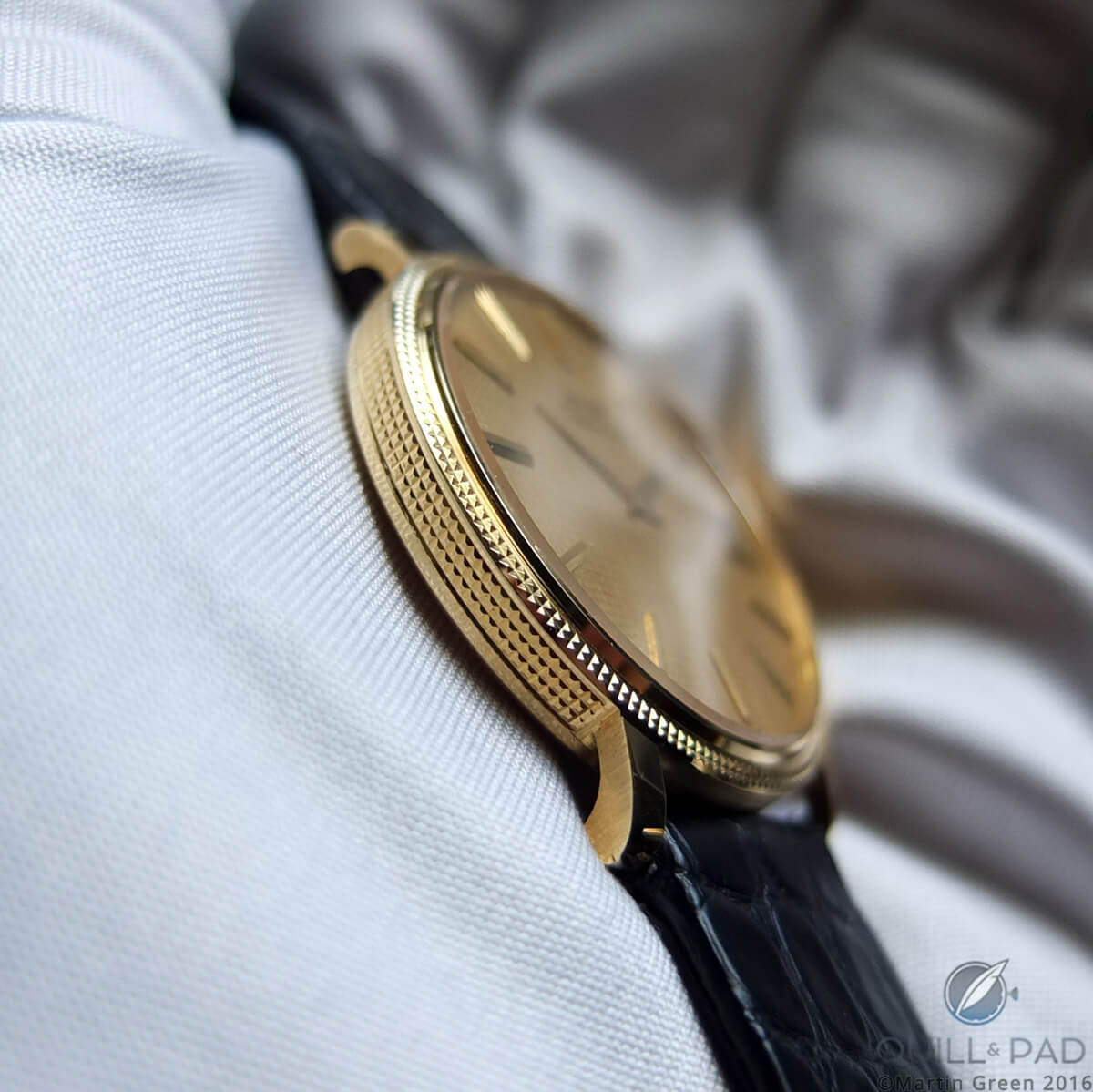
The slim profile of a beautiful ultra-thin Piaget Caliber 12P model from 1969
Despite being a very slim watch, Piaget didn’t compromise on durability. The sapphire crystal is mounted slightly above the bezel, so its softer gold is protected. When you take the back off the watch you are not holding a flimsy disk of gold, but a well made case back that has a solid feel to it.
Could this watch have been made thinner? Yes, if Piaget had skimped on those two elements, but that would have come at a cost of reliability that the brand wasn’t ready to pass on to owners.
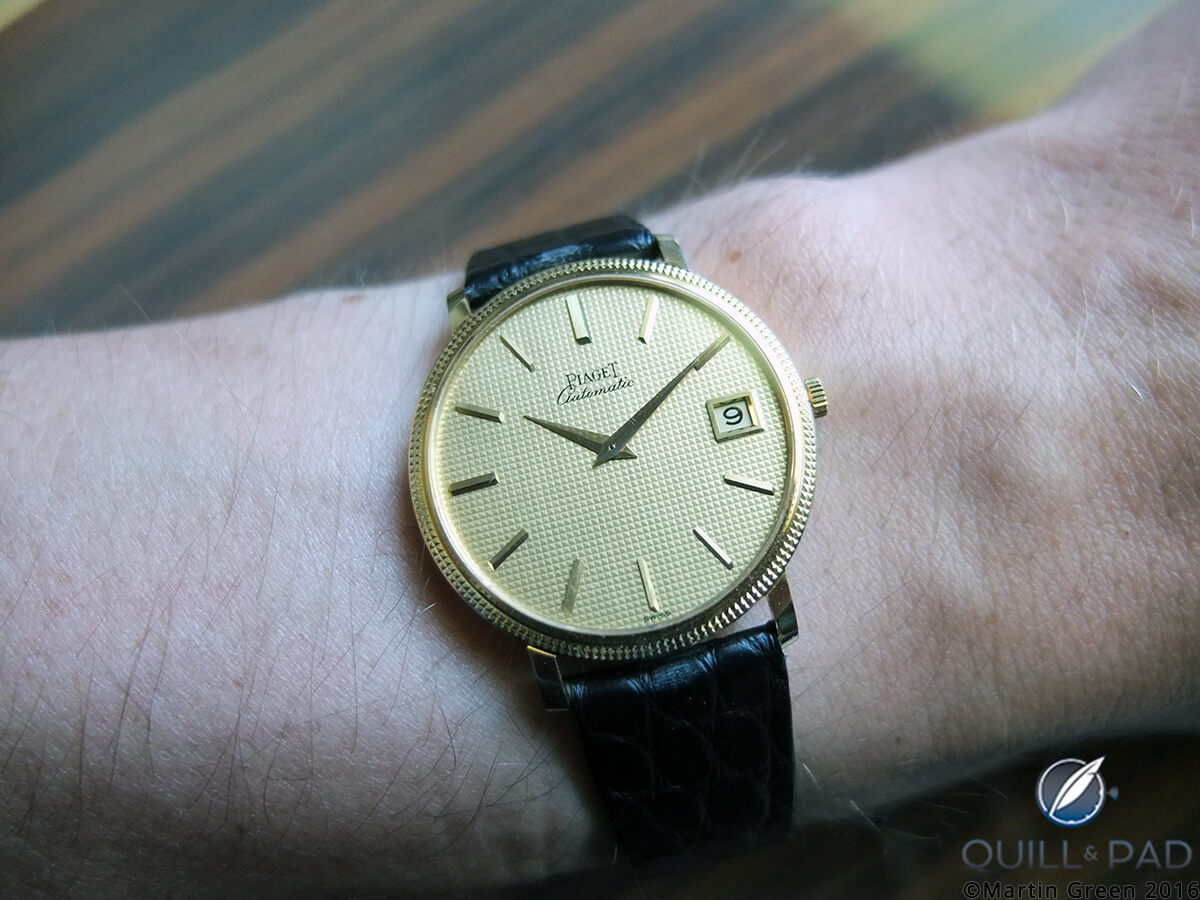
A thin and beautiful Piaget Caliber 12P from 1969
Those owners are, by the way, practical beings, because alongside watch connoisseurs and addicts like you and me, Piaget sells a substantial portion of its timepieces to classy, well-to-do people who just enjoy wearing a great watch in everyday life, and some of these people preferred to have a date function.
That date function added 0.5 mm to the movement, making its overall height still a very impressively small 2.8 mm.
Caliber 12P marks a very successful period in the history of Piaget, not only one of technical accomplishments, but also of aesthetic ones. This legendary movement now serves as the godfather of an entire range of ultra-slim automatic movements that are still designed and crafted along the same principles set out more than half a century ago – a legacy that brought us the current 1200P family of calibers and even the recently introduced Caliber 700P hybrid movement (see Piaget Emperador Coussin XL: 700P Hybrid Performance, Piaget Perfection), none of which would have been possible without Caliber 12P.
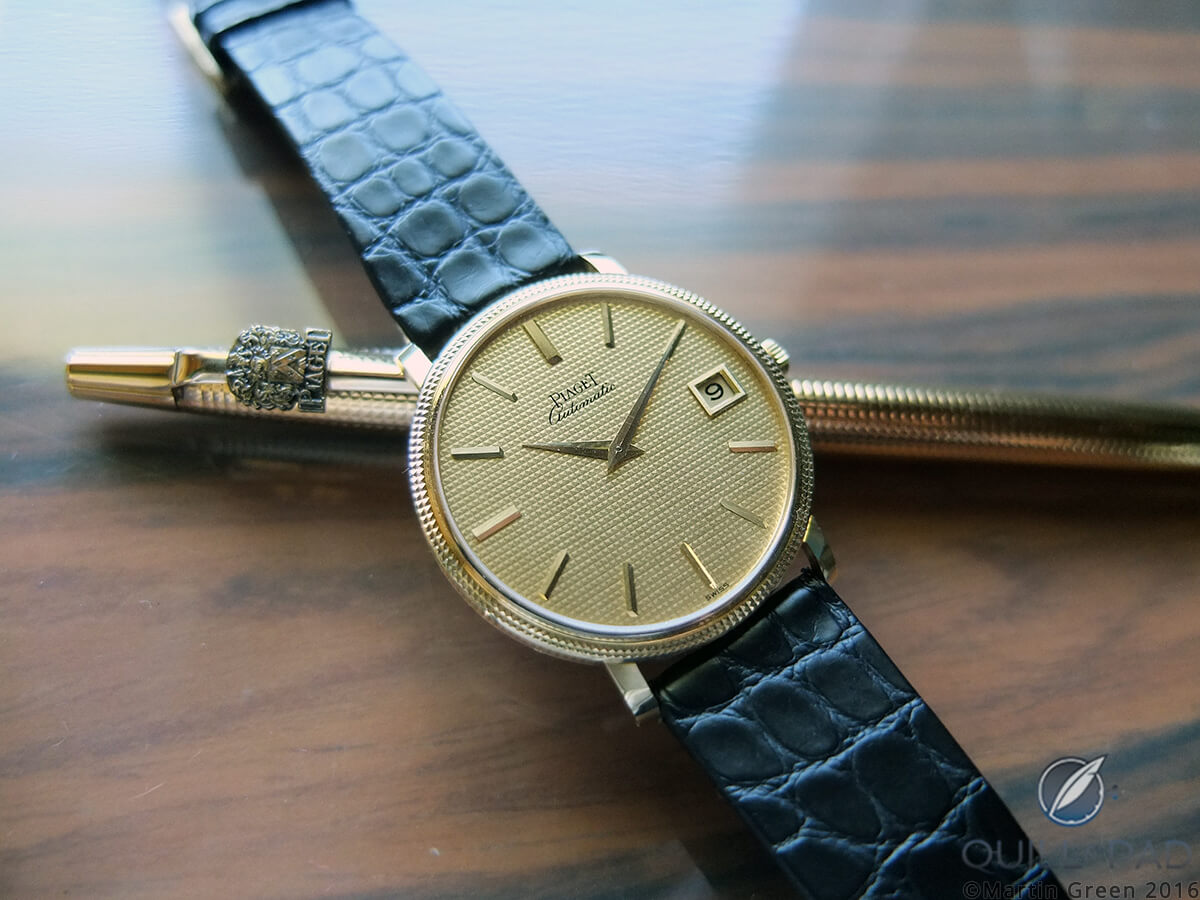
An exceptional Piaget Caliber 12P from 1969
For information on the modern counterparts, please visit http://int.piaget.com/watches/altiplano.
Quick Facts
Case: yellow gold with clous de Paris decoration, 32 mm
Movement: automatic Caliber 12PC1 with 24-karat gold micro rotor
Functions: hours, minutes; date
Year of manufacture: 1969
Price in 1969: 3,220 Swiss francs
Trackbacks & Pingbacks
-
[…] to go for a micro rotor when it created the legendary 2.3 millimeter-thick Caliber 12P in 1960 (see Piaget 12P: The Birth Of An Ultra-Thin Legacy), becoming the progenitor of an entire generation of automatic ultra-thin […]
-
[…] The back of the watch shows a four-digit number stamped above a six-digit number, an identification method favored by Piaget. The fact that this Pierre Arpels is also powered by Piaget’s superb ultra-slim, manual wind Caliber 9P suggests that the watch was made for Van Cleef & Arpels by Piaget (for more on this see Piaget 12P: The Birth Of An Ultra-Thin Legacy). […]
-
[…] ultra-slim movements that can handle pretty much anything: Piaget’s Caliber 9P (see Piaget 12P: The Birth Of An Ultra-Thin Legacy) and the Frédéric Piguet Caliber 21 found in this Louis Cartier […]
Leave a Reply
Want to join the discussion?Feel free to contribute!





















































Hi Martin,
What was the timing specs for that ultraplat caliber at that time? And the power reserv? They really pushed the limits at that time.
Thank you for a nice article.
Hi Håkan,
Thank you for your interesting questions! I don’t know the original timing specs, however this 1969 model did +4 seconds on the timing machine, so I suspect that they were capable of running all well within chronometer requirements. I didn’t test the power reserve fully, but I suspect that it’s somewhere in the mid 30s in terms of hours.
All the best,
Martin
Hi Martin, you are one lucky camper, this 12p is way awesome. Congrats, and wear it in good health.